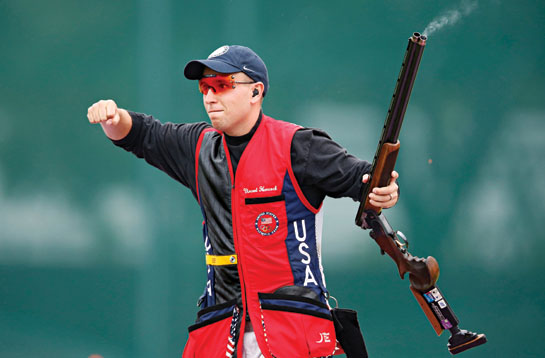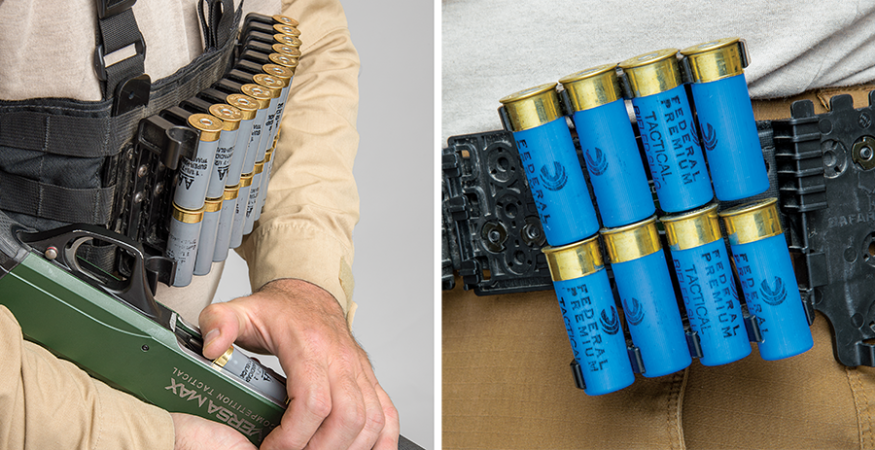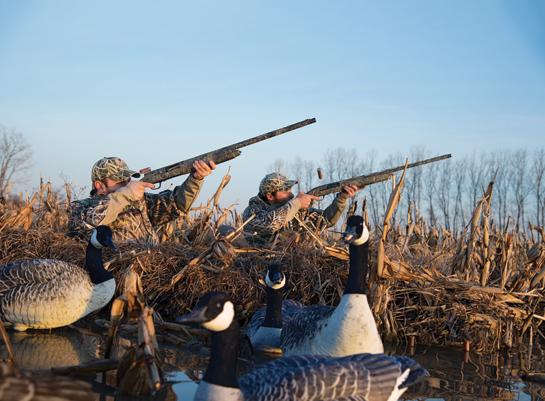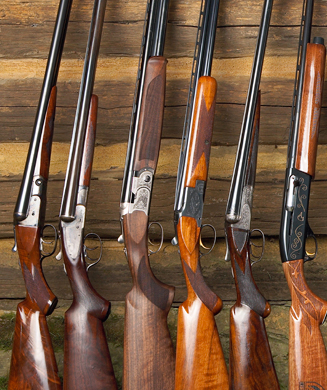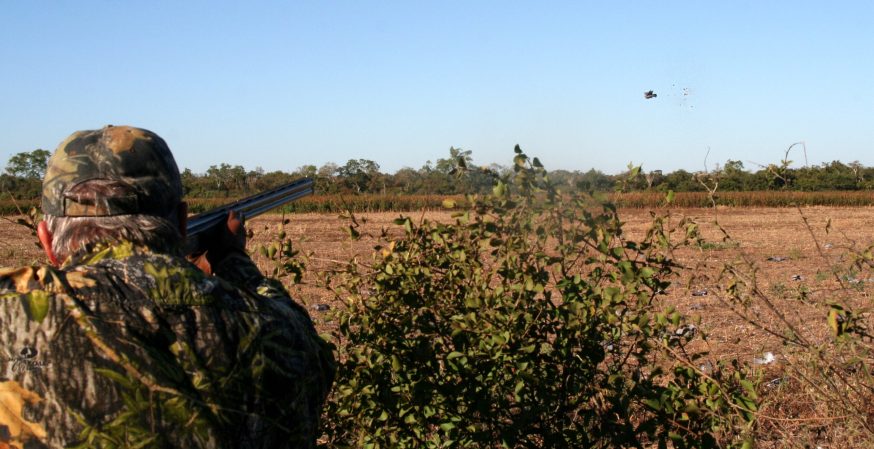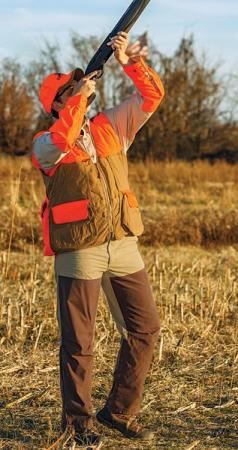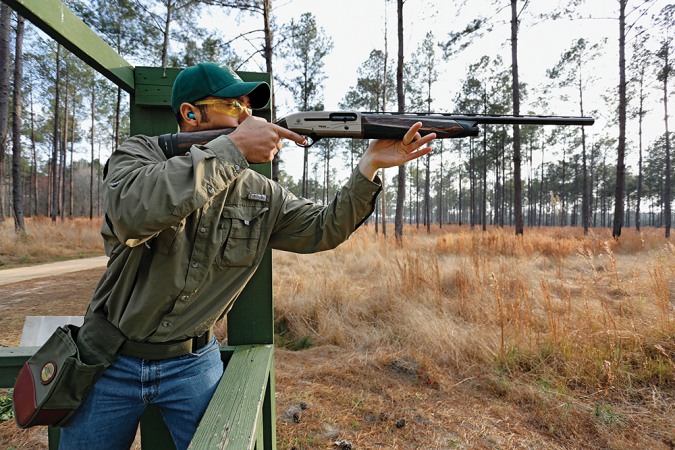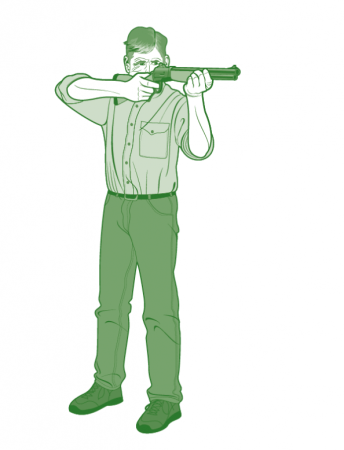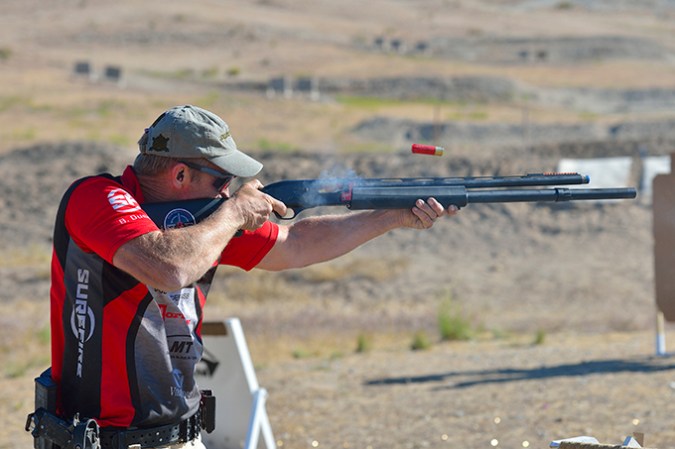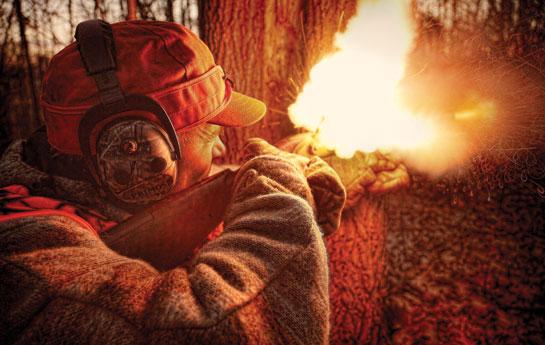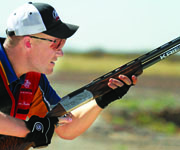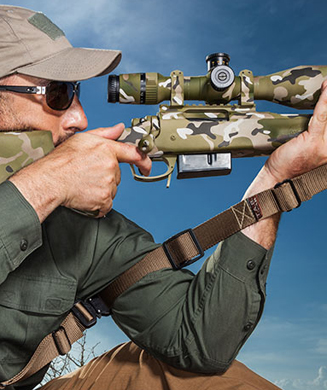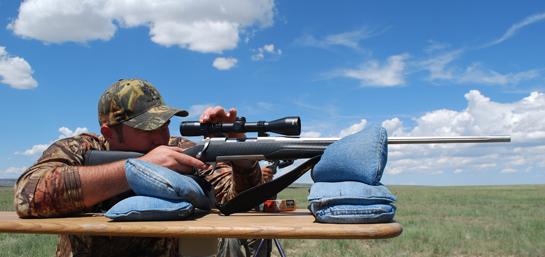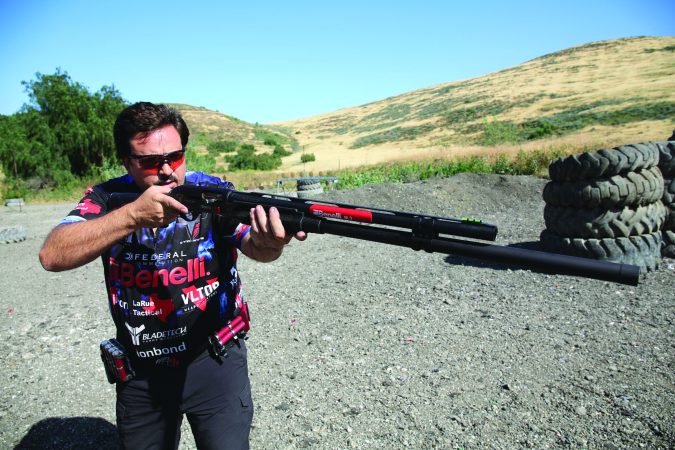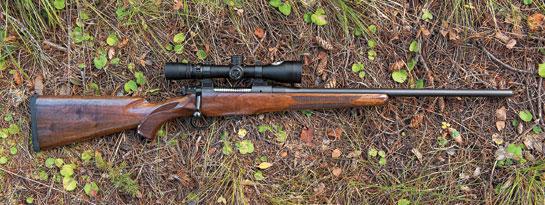We may earn revenue from the products available on this page and participate in affiliate programs. Learn More ›
Photo by Cathal McNaughton/Reuters/Corbis
Two-time gold-medalist Vincent Hancock answers questions about how he became one of the best shotgun shooters in the world.
Outdoor Life: What is the key to becoming a successful competitive clay target shooter?
Vincent Hancock: The biggest thing to me is the desire to win. This comes with a price, though, as you aren’t going to win if you aren’t willing to put in the time and effort to become an elite-level athlete.
OL: What’s the proper way to mount a shotgun?
VH: Simply put, the proper mount is “move, mount, and shoot.” With the hold point set appropriately, you will move with the target and match the speed with the correct lead already set.
OL: Okay, so how do you choose the right hold point?
VH: I try to find my break point, then place my hold point halfway between that and the trap.
OL: Is there an ideal shooting posture?
VH: This one is really up to the athlete’s preference. I choose to shoot with an aggressive but managed posture that allows me full vision with my head up, but my legs are still involved and move together with my body.
OL: What are some tips for people who struggle to pick up targets off the trap?
VH: In Olympic skeet, eye hold points are crucial, so to start with, you need to find out where your eyes pick up on the target the fastest. In most cases, my eyes will be on the trap, watching for the target to come off. If it is a quick target and it is beating my eyes out, I will move my eyes out on the flight path so I can keep up.
OL: How do you practice?
VH: I train mainly in chunks. I find a specific target or pair and train on it until I have it perfected.
OL: Some shooters struggle with a slow, long target because they can’t wait for it to get into the break zone. How do you manage these shots?
VH: I stay into these slow-moving targets by not tracking them the entire time with my barrel. We can’t track a target for 100 feet with the gun mounted. Our eyes will “wiggle” or lose focus. Typically, they refocus on the closest, most obvious point, which is the barrel.
I start by figuring out where my break point will be and then move my barrel in about halfway to the trap. I set my eyes and then call for the target. When the target is released, I watch it and slowly mount to the target. Then when the gun hits my shoulder, I lock on for maybe a second and pull the trigger.
OL: Obviously, it’s necessary to lead targets, but how do you know the “right” lead?
VH: It certainly does take lead to break a target, and there are an infinite number of ways to break a target. In international skeet, we don’t have time to process lead or we would never break any of the pairs. Our subconscious mind will automatically make the correct lead if we allow it to, but that is the hardest part. I try not to focus on any leads, but occasionally I will pay a little more attention to lead if I am having trouble with a particular target, just so I know what it takes to break it and to not fight my subconscious mind.
OL: Everyone wants to know how to hit a springing teal. What’s your technique?
VH: I was always told to shoot it at the peak, but I was never any good at shooting it there. So I started shooting everything falling. I lock on to it at the peak and then slowly pull away as it is falling.
